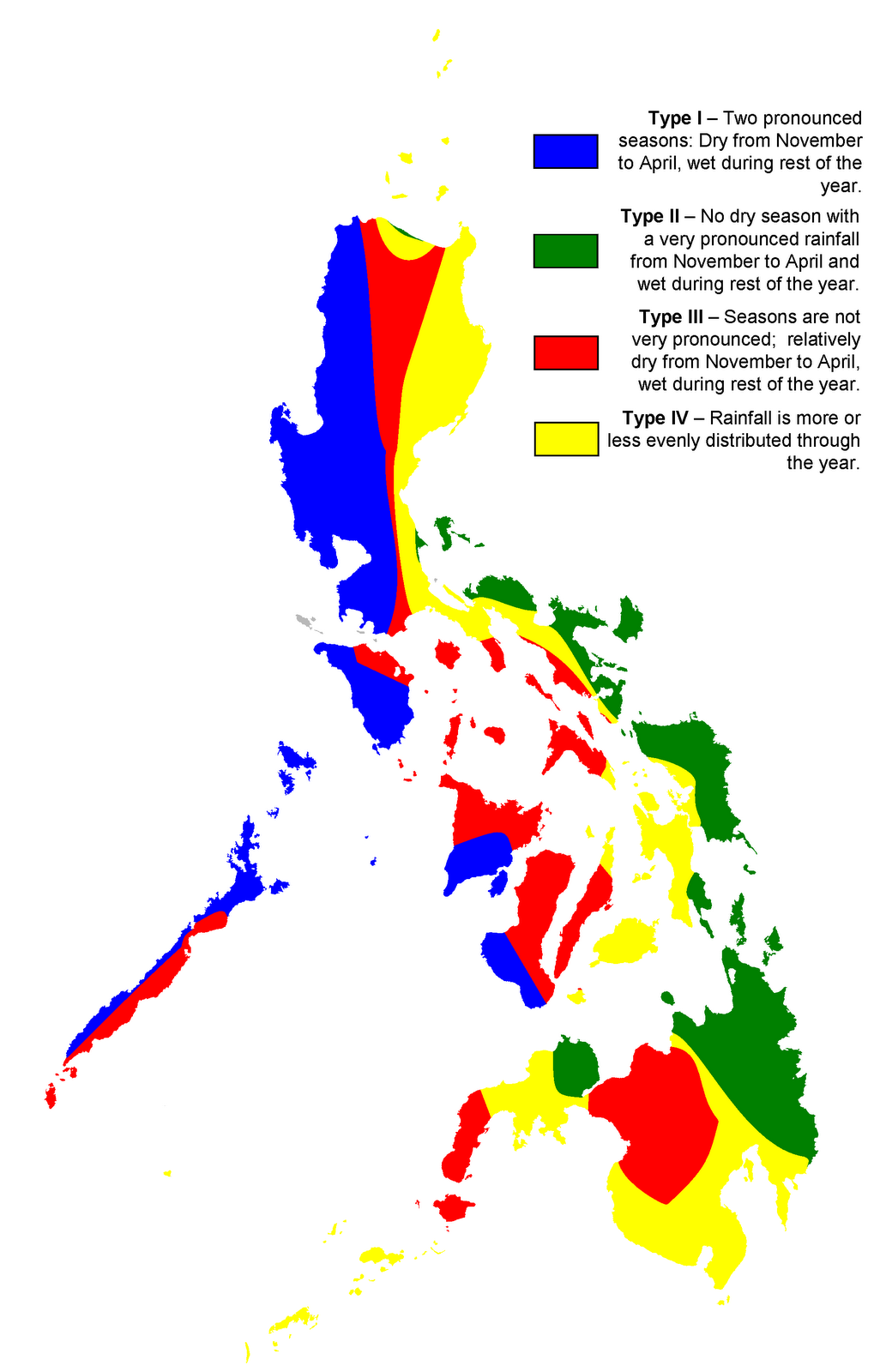
Philippines Map Regional Political Maps of Asia Regional Political City
The Philippines is subdivided into 17 regions - 8 in Luzon, 3 in the Visayas, and 6 in Mindanao. These regions, excluding the BARMM, are not local government units but their existence is primarily for administrative purposes.

Regions of the Philippines Discover The Philippines
The northern region of the most populated island in the Philippines is where you'll find mountains, coastlines, tropical forests, and rivers.. No sight in this area is more famous than the stunning Banaue Rice Terraces; located near the popular, relatively cool-weather city of Baguio, these terraces are like emerald steps down the hills of the Cordillera Mountains.
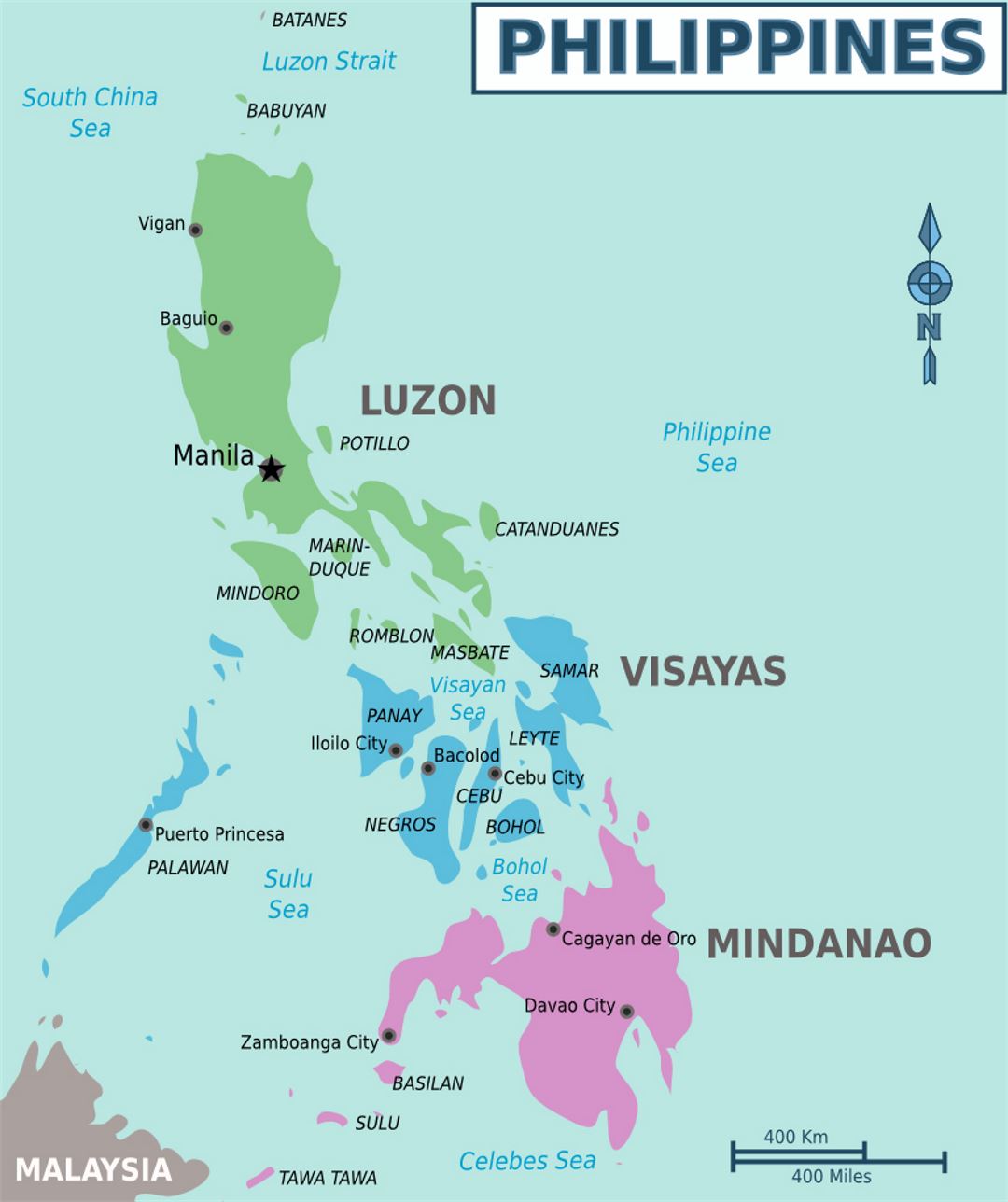
Detailed regions map of Philippines Philippines Asia Mapsland Maps of the World
The Provinces of the Philippines are the main political and administrative divisions of the Philippines. There are 82 provinces at present. The provinces are divided into cities and municipalities. The National Capital Region, as well as independent cities, are separate from any provincial government. Each province has a governor .
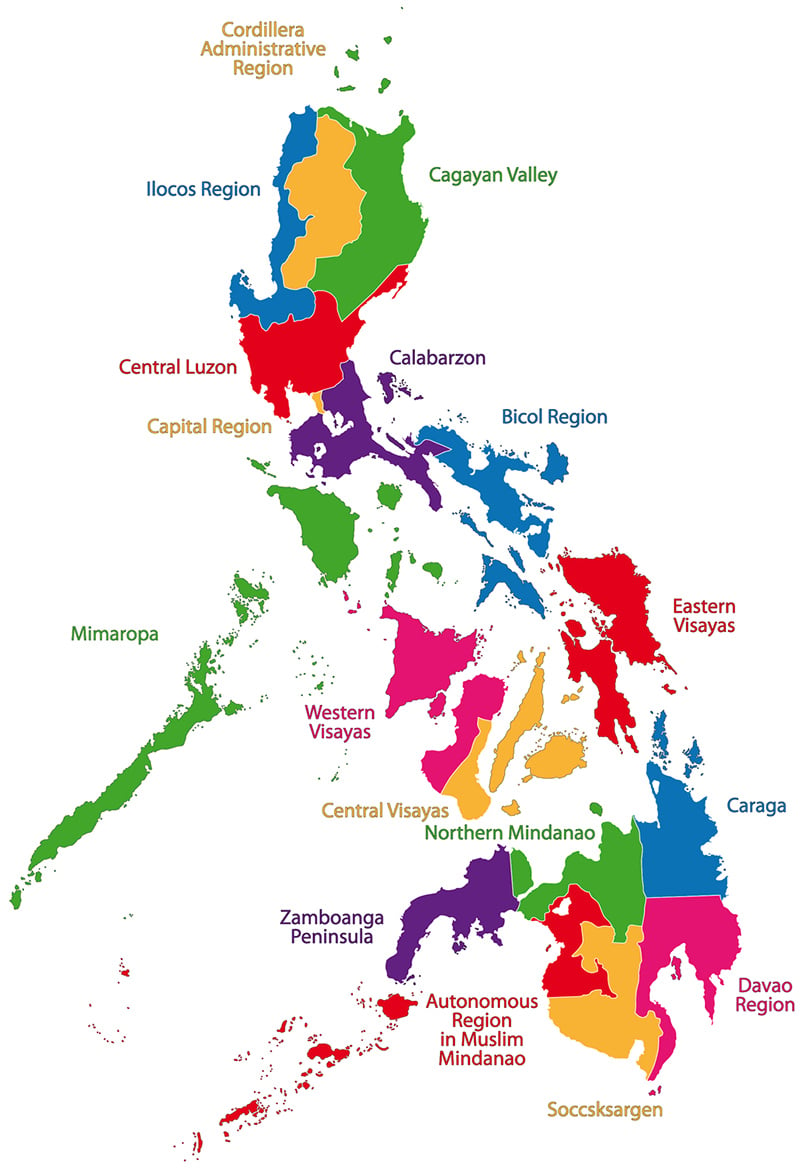
Philippines Map By Region Osiris New Dawn Map
The region is composed of five provinces: Oriental Mindoro, Occidental Mindoro, Marinduque, Romblon and Palawan. The name is actually a portmanteau of the provinces' names and the region is also known as the Southern Tagalog Islands. MIMAROPA is perhaps one of the most visited regions of the Philippines due to its archipelagic features.

Regional Map of the Philippines
The highest mountain in the Philippines, Mount Apo in Davao Region is a popular destination for mountaineers and nature enthusiasts. Davao City, the regional center of the region, is an important economic center, with a growing information technology and business process outsourcing (BPO) industry. Area: 20,357 km² (7,859 mi²)

Administrative regions of the Philippines Data source Center for... Download Scientific Diagram
The Regions In The Philippines. The country has three major island groups known as Luzon, Visayas, and Mindanao. Luzon has 8 regions under its belt, while the Visayas has 3 and the Mindanao has 6. Presently, two types of regions exist in the Philippines, including the administrative region (geographically adjacent regions) and the autonomous.

TemplateRegions of the Philippines Image Map Wikipedia
In the Philippines, regions ( Tagalog: rehiyon) are administrative divisions that serve primarily to organize the provinces ( lalawigan) of the country for administrative convenience. Most government offices are established by region instead of individual provincial offices, usually (but not always) in the city that is the regional center.
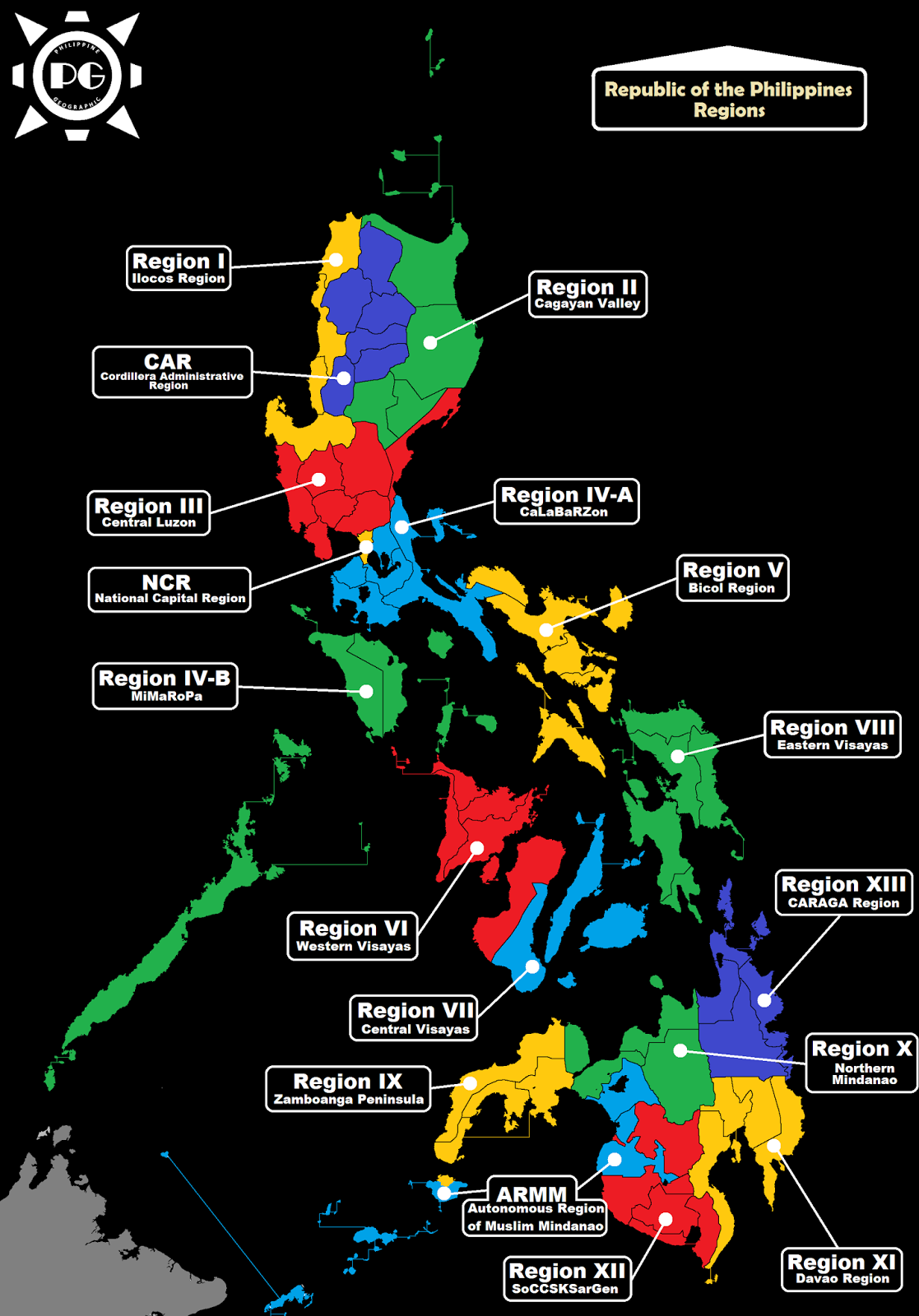
Philippine Geographic Regions of the Philippines
There are 82 provinces in the Philippines. The Philippine Archipelago with 7,600+ islands have a population of approximately 100 million people. A country of this size and population requires some organization to make it manageable. There are 38 in provinces in Luzon, 27 in Visayas, and 17 in Mindanao.. Map of the provinces in the Philippines followed by detailed information about each province.

Philippines Regions Map
Region III - Central Luzon. The Central Luzon region represents over 19% of the overall population in all of Luzon. It has 116 municipalities, and it includes these seven provinces: Bataan. Bulacan. Aurora. Tarlac. Pampanga. Zambales.

Philippine Maps
REGIONS IN PHILIPPINES - Below is a full list of all the regions that compose the Philippines and the provinces under each region. There are more than 7,600 islands that compose the Philippines. These are divided among 18 regions in unequal numbers depending on their geographical locations. Each region is composed of several provinces and you.
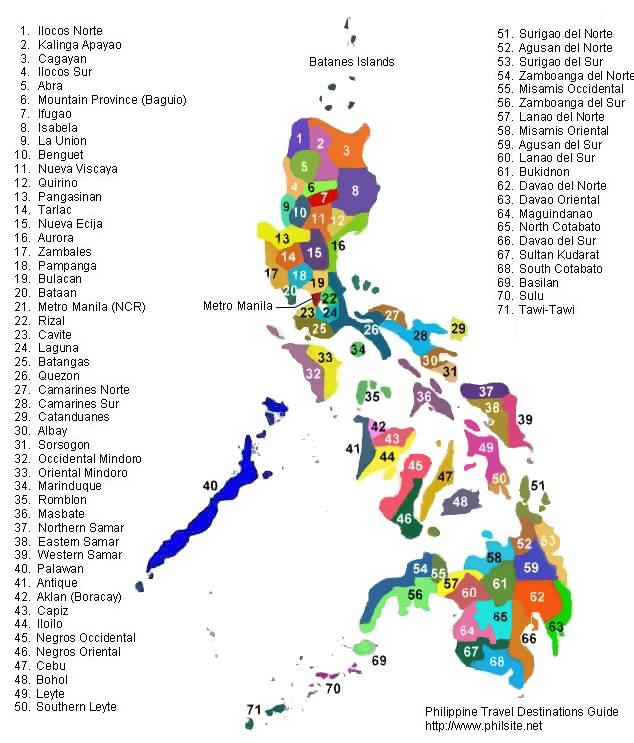
Philippines Map
The Philippines, an archipelago in Southeast Asia, situates itself in the western Pacific Ocean.It shares maritime borders with Vietnam to the west, Taiwan to the north, Palau to the east, and Malaysia and Indonesia to the south. The archipelago encompasses a total area of approximately 300,000 km 2 (about 115,830 mi 2).The geographical profile of the Philippines is broadly divisible into.
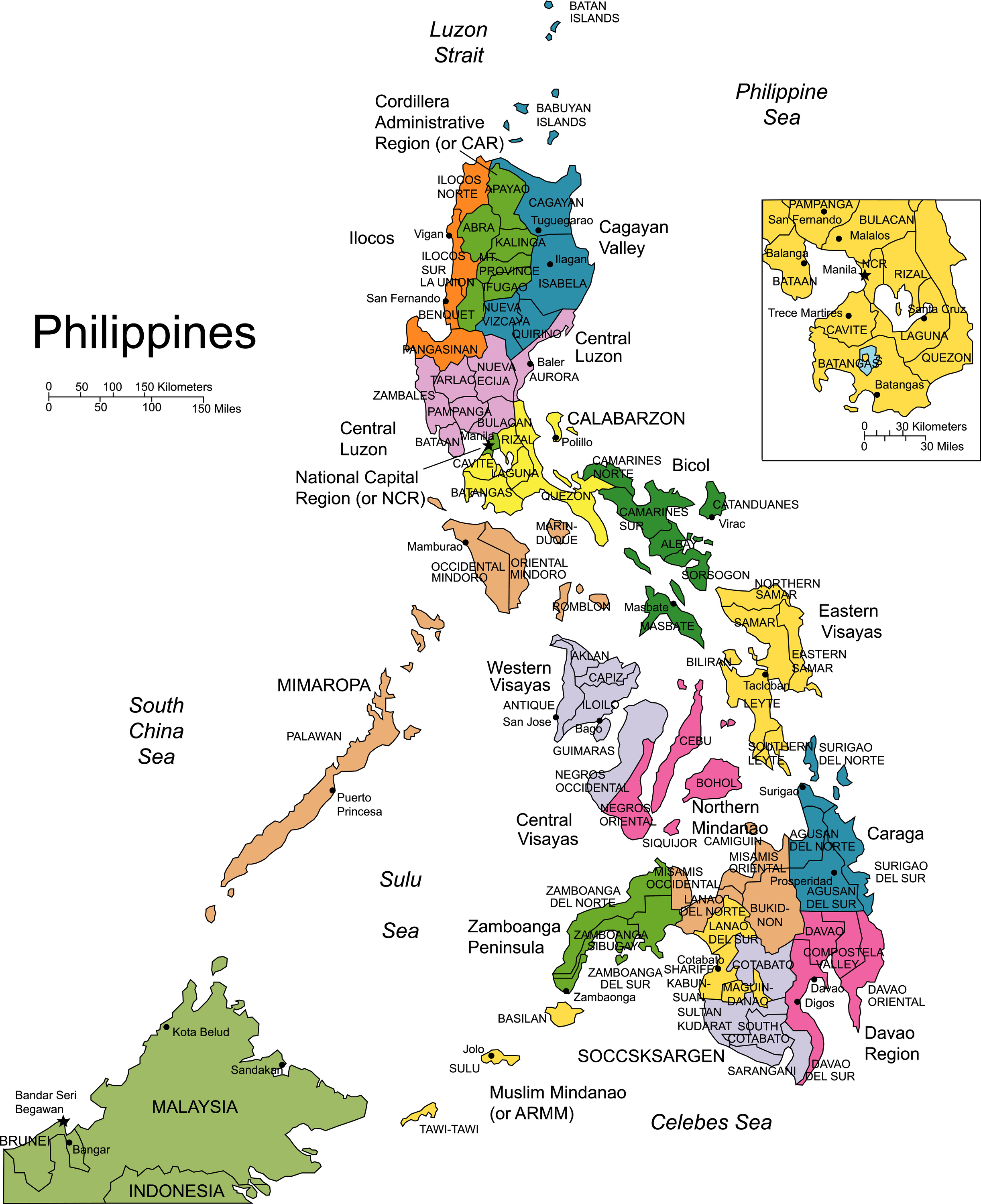
Map of the Philippines WhatsUp Philippines
There are 17 Beautiful Regions in the Philippines. There are 8 Regions in Luzon ( (Regions I, II, III, IV-A, IV-B, V, CAR and NCR)) three in Visayas (VI, VII, VIII) and six regions in Mindanao (IX, X, XI, XII, XIII, BARMM). We almost visited all the regions in the Philippines but we are still missing a couple of them.

Map of the Philippines showing the administrative 17 regions [19,20].... Download Scientific
In the Philippines, regions are administrative divisions that primarily serve to coordinate planning and organize national government services across multiple local government units . Most national government offices provide services through their regional branches instead of having direct provincial or city offices. Regional offices are usually but not necessarily located in the city.

Maps of the Philippines (Regions and Provinces) online Maps and Travel
In the Philippines, provinces (Filipino: lalawigan) are one of its primary political and administrative divisions.There are 82 provinces at present, which are further subdivided into component cities and municipalities.The local government units in the National Capital Region, as well as independent cities, are independent of any provincial government.

Philippine Map By The Regions
In the Philippines, regions (Filipino: rehiyon; ISO 3166-2:PH) are administrative divisions that primarily serve to coordinate planning and organize national government services across multiple local government units (LGUs). Most national government offices provide services through their regional branches instead of having direct provincial or.
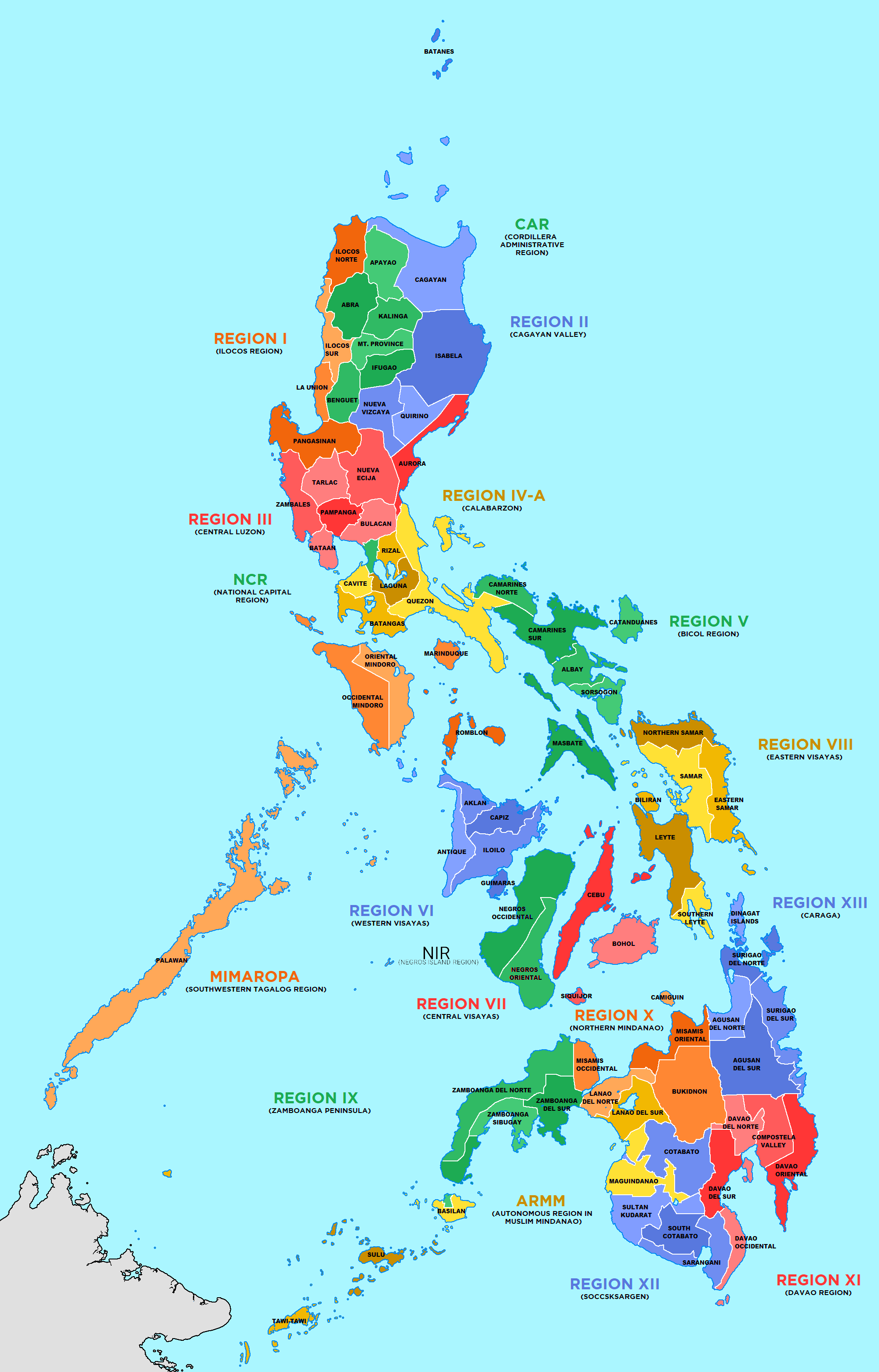
Philippines regions and provinces • Map •
The region has five provinces of Quirino, Nueva, Izcaya, Isabella, Cagayan, and Batanes. It is the second-largest region in the country and covers an area of 10,899.1 square miles with a population of 3.45 million people as of 2015, which accounted for 3.42% of the total population in the Philippines. The administrative center of the region is.